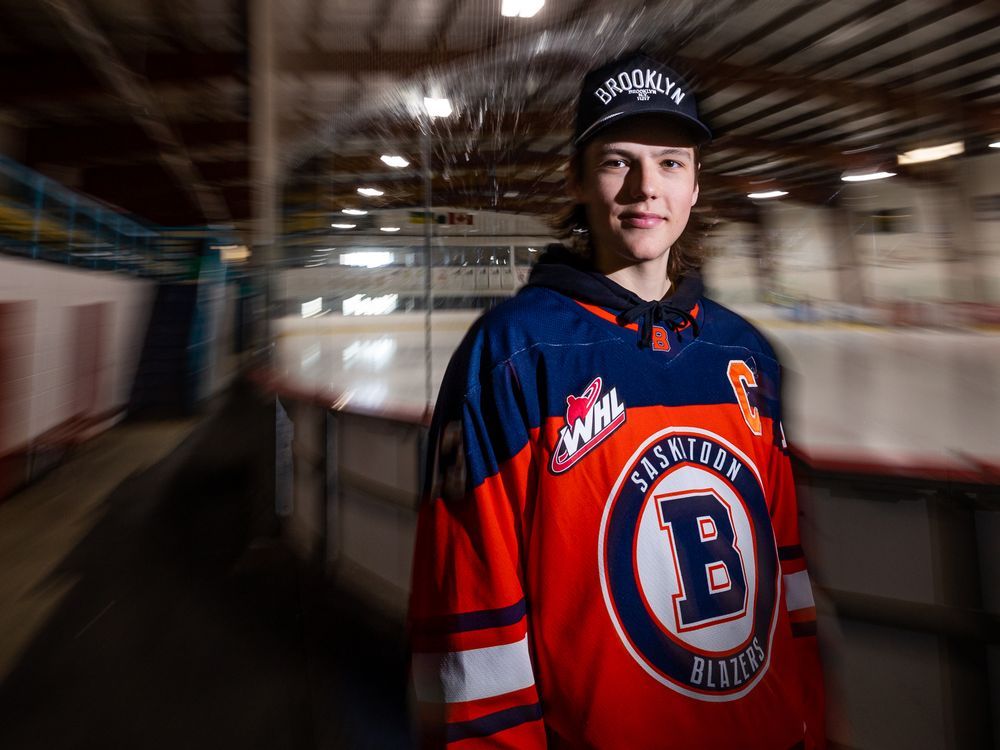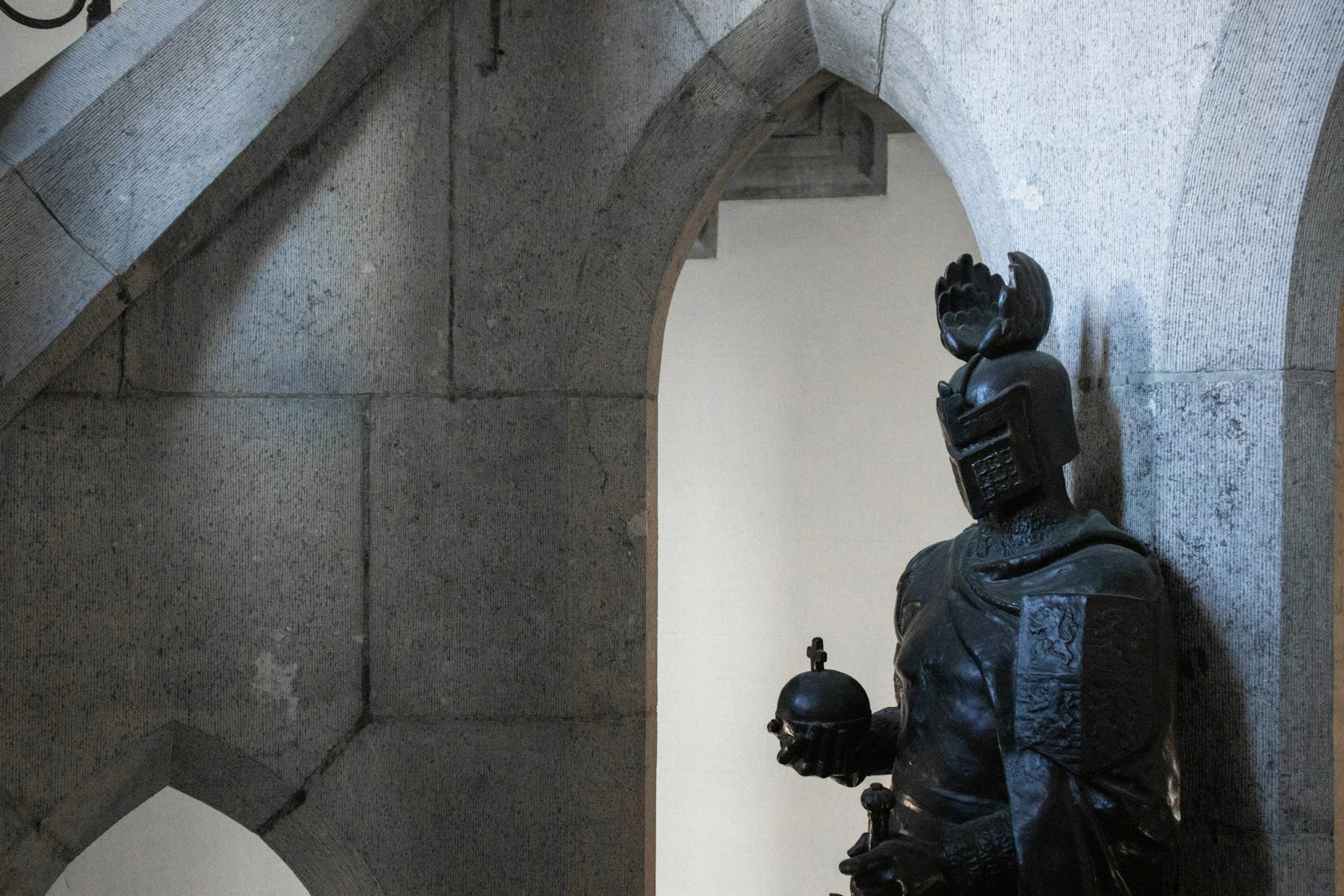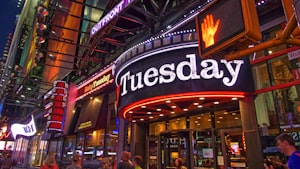One thing that the Maple Leafs have talked about a lot in the last couple of years is a prospect being "early in his development curve" as a positive thing. Wes Clark said it about Easton Cowan after this year's draft, and while he didn't really elaborate on what that meant we can make some reasonable guesses. Here's what I said in the profile about Cowan:
I'm assuming he's thinking the same thing that Cathy has talked about – how Cowan was new to the OHL this year, and missed an important season from the pandemic. He's still adjusting to higher level hockey, but after he adjusted to start the season he's really taken off. The thought process seems to be that because of this, Cowan may have more developmental growth to come where others that have been in the OHL or their junior leagues for 1-2 seasons don't.
It's weird to consider a D+1 re-entry prospect to be "early on his development curve", but if it's possible then surely we can say that about Hudson Malinoski, who has gone through a hell of a journey in his young life. He may be both a late bloomer, but also on a delay thanks to a couple of massive events in his life that could have set his development back two years.
Let's talk about it, and who Malinoski is as a player.
THE BASICS: STATS AND CONTEXT
Position: C
League: AJHL
Height: 6’1”
Weight: 174 lbs
Birth date: May 19th, 2004
Hudson Malinoski is Toronto's traditional re-entry pick, and as you may expect there are some good reasons why he went undrafted last year. Back in 2017 as a 13 year old, Malinoski fell off his roof trying to shovel snow. He suffered a concussion and tore his vertebral artery that supplied his brain with blood. He required an experimental surgery to repair the damage. He was more worried he'd never be able to play hockey again, but he was able to eventually fully recover to return to sports. Which, if you haven't read this article with the full story, seems like a small miracle.

Coming off such a serious injury that jeopardized his ability to play any sports, and being considered undersized at the time at 5'5" and 120 lbs, Malinoski went undrafted to the WHL. So since then Malinoski has still been growing taller, while his body has only barely kept up with his weight. 174 lbs is pretty lanky for a 6'1" kid.
Unfortunately for Malinoski, it would not be the last time he would lose most of a season during his most important developmental years. After playing two full seasons in AA and AAA hockey, the pandemic would shut down his league for basically the entire season. That just so happened to be his D-1 season, and he would have to return there for his draft year (2022) where he would receive almost no scouting attention by NHL teams.
However, he did have a successful year captaining his team with 31 goals and 60 points in 43 games. He followed that up by committing to an NCAA path, leading him to play in the AJHL this year – one of the top non-CHL junior leagues that are used by prospects to maintain their eligibility to the NCAA. He had another successful season centering the top line for the National Champion Brooks Bandits. His season had a few different segments that I'll just break down in point form:
- AJHL regular season: 44 games, 16 goals, 53 assists.
- AJHL playoffs: 15 games, 3 goals, 4 assists.
- World Junior A Challenge: 6 games, 4 goals, 3 assists.
- Centennial Cup: 6 games, 4 goals, 6 assists.
Pretty much at every opportunity, Malinoski played a top role and did well for his opportunity. A few things to note. First of all, 45 of his 69 points in the regular season came on the powerplay where he played a similar role as Minten this year. He was playing on the point as a primary distributor, but also because he was a legitimate shooting threat. That's certainly not great in terms of projecting his ability to produce at 5v5, but it does make him intriguing as a bit of a specialist.
So it's easy to see why Malinoski went undrafted last year. He has been playing catch up for the past 6 years after suffering a significant injury, with one of those seasons being interrupted by the pandemic. He's also been a late bloomer in terms of his size, and all the usual growing pains (literal and metaphorical) a kid can go throw during a growth spurt. As a result of both, Malinoski is still pretty darn new to higher levels of hockey. It was only two years ago that he played his first full season of AAA hockey. Then last year was his first year in a major junior league, and next year he'll make another jump to the NCAA. He's finally catching up on the development he's missed, or that is at least what the Leafs are hoping.
THE GOOD: SHOOTING, PASSING
The good news is that Malinoski's biggest strengths, right now, involve what he can do with the puck on his stick in just about every way. Let's run through them in ascending order of quality.
Malinoski's puck handling right now profiles as maybe a bit above average, but could project to be just regular above average. He does not display a consistent amount of high level dangles, but he can stick handle his way past defenders in the AJHL – not exactly the toughest competition even for junior standards. Here are some clips of what he is capable of:
Playmaking-wise, Malinoski profiles a bit better and I would say he could be projected as above average as well. He has good vision and, thanks to his puck handling, he has enough deception to be able to make some slick passes. I would say his passing is more limited the longer distance it gets, but I'll want to see full games of his before I can be firm on that. The one thing I can already tell from some of the clips I've seen is that his passing benefits from the threat of his shot... more on that below. Here are some highlights of his passing:
If you look at his stats you may assume that Malinoski is a better playmaker than finisher, but watching Malinoski's highlights I think the opposite is true. His biggest strength that I can see is clearly his shot, which I think projects as elite or very close to it. He has a wicked wrist shot that has both power and accuracy, and a lot of his highlights involve him just sniping it by a goalie with perfectly placed shots. With that wrist shot, he also showed he can work in some deception with a Matthews-like curl and drag to change the angle, and get his shot away to avoid defenders' sticks from blocking or deflecting it away. He can also uncork a bomb of a slapshot, though he doesn't seem to use it a lot. Here are highlights of his shot to give you an idea of what he's capable of:
The issues that Malinoski may have with his shot is similar to what Minten has had. This year he showed a very improved wrist shot that was a real weapon, but he seemed to only be able to uncork it on the powerplay where he had more time and space to wield it. He still has to learn how to time his routes, position himself in open space, and get the puck into areas on the ice where he can use it. Part of that, however, is that the way he plays at 5v5 is very different than how he plays on the powerplay – at even strength he is either forechecking aggressively and helping out down low, or supporting the defense up high where he isn't necessarily as involved in the possession. The puck doesn't run through him like it does on the powerplay.
I think the same thing could be an issue with Malinoski, but again I'll want to watch more games of him to tell. I know that in the scouting reports I could find, Malinoski got good grades for being an intense forechecker and having some power forward elements to his game. That could just mean that he isn't as present in the slot and is often more along the boards and behind the net, where the strength of his shot isn't as useful.
THE FLAWS: SKATING, STRENGTH, EXPERIENCE
There are three more obvious areas of opportunity for Malinoski to improve as a prospect: his experience, his physical strength, and his skating.
The first one is just experience at high level hockey. He's missed so many important developmental years, and that likely contributed to him never playing high level hockey until this season. Two years ago he was still playing in AA, last year was the first time he played in AAA, and this year was the first time he played in a major junior league. Next year he'll be making a jump in quality competition again to the NCAA even if it's a weaker conference.
The good news is that this is something he's going to get. The issue it relates to is the consistency of his decision making. It's not that he makes bad decisions or has low "hockey sense" – Toronto would never draft someone they thought was not "smart". But it does sound like Malinoski still processes the game a bit slower when he has the puck, which also may explain why he's more effective offensively on the powerplay – because he has more time. Going from AA, to AAA, to a major junior league, to the NCAA is a series of steep steps in terms of how fast and close competition will defend, and he's also still potentially catching up on his development.
The second issue he will need to work on is getting stronger, which should also be something that comes a bit easily over time. To be clear, there's no guarantee he becomes a Nylander-esque Greek God, but right now he's listed as 6'1" and 174 lbs – that's pretty lanky, and even just watching his highlights pack I saw him make a play but then get pretty easily knocked on the ice by smaller players. He's going to want to work on his balance but also bulk up so he's not only difficult to push around, but can do the pushing around in turn.
The good news on that front is that Malinoski already plays a bit of a power-style game at even strength. He skates and forechecks hard, he will try and throw his body around... it's just not as effective now as it could be. The important part is he's already showing the willingness to do those kinds of things, and that would likely remain once he fills out and gets stronger.
For the third reason, Malinoski will need to improve his skating. Right now I'd project his skating as average. He uses crossovers, he's pretty fast, and decently agile in tight. But he lacks higher end speed and explosiveness. This is something that can also be fixed somewhat just by adding more strength. As he bulks up, specifically in his legs and core, and refines his mechanics as much as Toronto's coaches can help, he will be able to add a lot more power into each stride. It's also something that can help his balance, so he remains more firmly planted on his feet when someone tries to check him or vice versa. Improving his speed and explosiveness will only help his two-way, power style game that he has flashed this year.
OVERALL ASSESSMENT
I quite like this pick for where they got him. He is still very raw as a prospect, but he does have intriguing tools. If you're going to swing on a late round pick, I have no problem taking a guy who's pretty big, plays center, and could potentially have an elite shot. His skating, which needs improving, is not terrible. He looked like he was keeping up with everyone at the development camp scrimmage, but it did look a bit rough. Adding muscle and working with skating coaches will help smooth out his mechanics for agility, make him stronger on his feet, and provide better speed and explosiveness.
Malinoski will be a longer term project. Barring a ridiculous couple of years for his development, I am assuming he'll be in the NCAA for the next 3+ seasons. If he does very well, he could transfer to a better program in a tougher conference after a couple of years. In the meantime, he'll be working with a program that has churned out some NHLers, but not many of them real stars – Brandon Duhaime, Jake Walman, Noel Acciari, Mark Jankowski, and Brandon Tanev are the best examples.
Providence is part of the Hockey East conference, which has all the Massachusetts schools (Boston College, Boston University, UMass, UConn, Northeastern, etc). It hasn't necessarily been among the stronger conferences in the last few years, but looks like it might start getting there. They have a lot of top prospects committed to their programs, plus some of the teams have been among the better teams in the NCAA the past year or two. So Malinoski will have the chance to play against some good teams.
And, Malinoski will be joining an almost entirely brand new team at forward. From what I can tell, Providence is currently set to have all but one of their forwards from last year still on the roster for this season. It will also be a pretty young team, with only four or five others that will be older than him.
For a 5th round pick, Malinoski has an interesting set of tools. He also a lot of projectable elements to his game that some later round picks don't necessarily have – which is more surprising since he was a re-entry player. Some of that is because of the delays he's faced due to a freak injury and the pandemic, but he's also had a "late bloomer" growth spurt to contend with.
If everything breaks right for him, Malinoski could make for an interesting bottom six center with a decent array of NHL-skills handling the puck, passing, as well as playing a bit of a power-forward, two-way game. On top of that, he could have a specialized role using his shot from the point or half wall on the powerplay. Time will tell if he can develop enough of a two-way game to reliably kill penalties, but he has the tools to have potential there.
Malinoski has been a remarkable story already in his young life, overcoming a lot more adversity than most others his age will ever deal with. It will be easy to root for him to be the next Grebyonkin or Holmberg as a later pick who turned into something real interesting.







